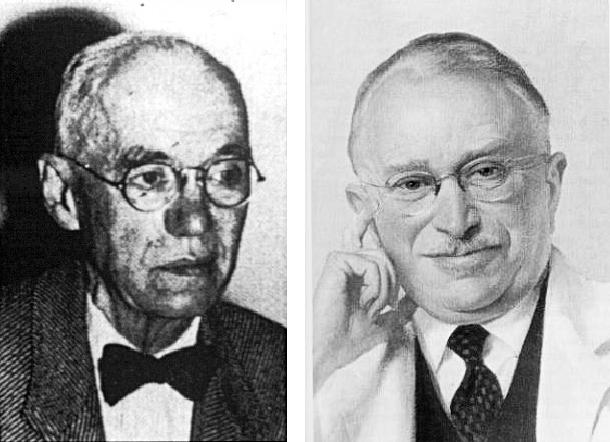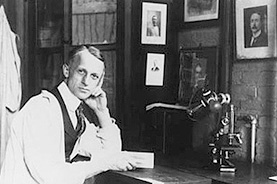
Dr. Donald Munro, Society of Neurological Surgeons. Dr. Ludwig Guttmann, International Spinal Cord Society, UK
Prior to Ludwig Guttmann becoming director of the Spinal Center, there was little advancement or understanding of care. During World War I doctors had a despondent attitude.
"The management of injuries of the spinal cord has been among the more dismal chapters in the medical history of World War I... The results of spinal injuries were described as extremely discouraging and mortality as very high." (Major General S.B Hays, The Medical Department of the United States Army, Neurosurgery)
"In no previous war, nor in civilian life, has the patient with spinal cord injury been considered particularly a problem. It has been taken for granted that he was hopeless cripple and that, from bladder infection with its sequelae, his life expectancy was brief. Nursing care and narcotics were in most instances the main treatment. … Much work still needs to be done to persuade medical officers more settled in their ideas that these soldiers are not outcasts." (Brigadier General C.M Walson, Conference on Spinal Cord Injuries)

Dr. Harvey Cushing, 1907 Cushing/Whitney Medical Library
"Spinal Cases - These have done very badly throughout, as was anticipated. Most of them were immediately evacuated to Base Hospitals and fully 80% died in the first few weeks in consequence of infection from bed sores and catheterization. The conditions were such owing to pressure of work, as to make it almost impossible to give these unfortunate men the care their condition required." (Harvey Cushing, Transactions of the Congress of American Physicians and Surgeons)
As World War II began, the main factors to early death were complications from infection or bedsores. Through developments in medicine, penicillin and sulfa drugs, survival improved, but the question remained what kind of life would these victims lead?
"Although during the prewar years civilian neurosurgeons had some hopeful experiences in the treatment of paraplegia, it is lamentably true that, during the early months of World War II, ...casualties arriving had very little encouragement offered them. Two factors were responsible. The first was the feeling of hopelessness inherited from World War I. The second the administrative policy, that these patients should be passed through the Army hospital system as rapidly as possible and then discharged .... as inevitable casualties of the war." (Major General S.B Hays, The Medical Department of the United States Army, Neurosurgery)
In 1936 Donald Munro established the first 10-bed spinal cord unit in the US at Boston City Hospital. He was optimistic and emphasized bladder control and turning patients to prevent bedsores. Lugwig Guttmann took his ideas and built on them.
"I was distressed yesterday at the implication voiced by many... that wheel-chair life was good enough life for a paraplegic. This is so far from the truth... Infallible-twenty-four hour control of urination together with ambulation, normal social life and the ability to earn his own living are well within the bounds of possiblity for every paraplegic." (Donald Munro, Conference on Spinal Cord Injuries)

Dr. Donald Munro, Society of Neurological Surgeons. Dr. Ludwig Guttmann, International Spinal Cord Society, UK